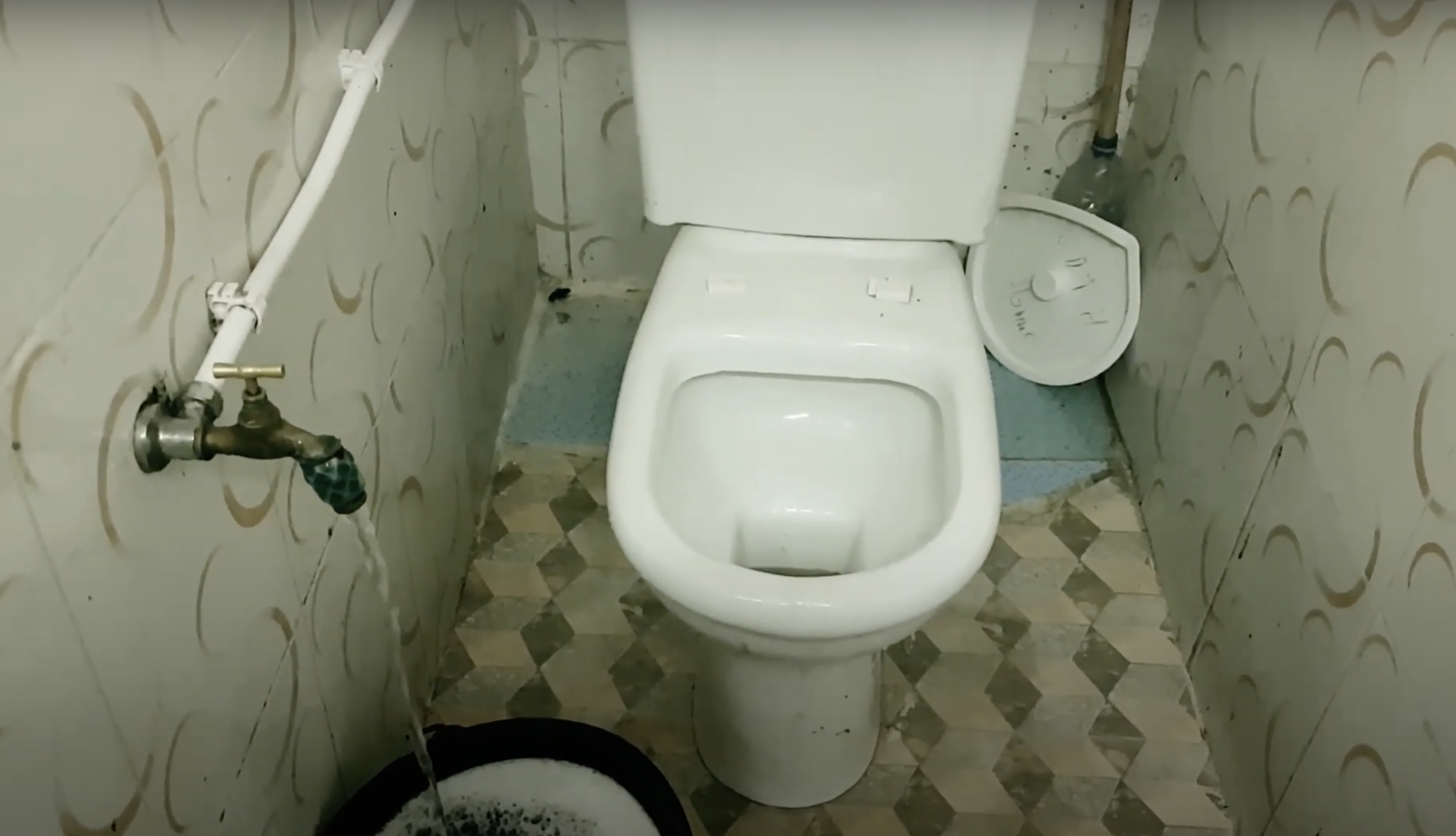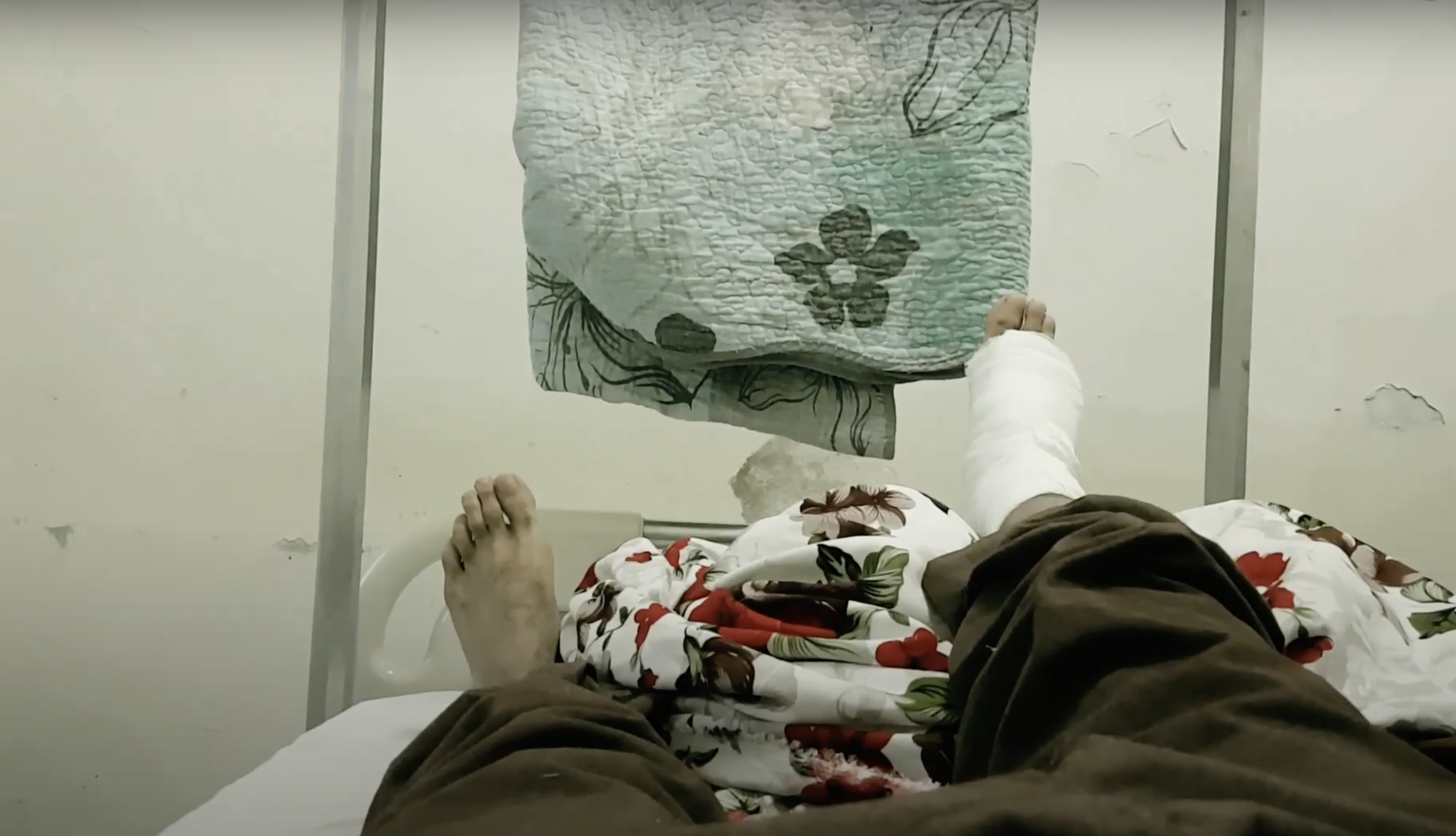Che Guevara
Che Guevara
Directed by Mustapha Benghernaout
Animation: Taher Mohamed
Music: Kevin Mcleoad
Origin: Algeria
Year: 2021
Click Here for Italian Version
“No one knows what goes on inside a hospital room, until they are locked in.”
Ernesto Guevara, known as “Che”, is the legendary figure of the Cuban revolution. His thoughts about proletarian internationalism are narrated in the book Guerrilla Warfare. In his book, he describes the organization of the liberation guerrilla based on Cuban experience. The topic of one chapter is the hospitals, essential places both in war and in peace. Che Guevara wrote: "... hospitals with the greatest comforts possible are established for direct investigation in the zones affected of the causes and effects of illnesses that afflict the inhabitants of the area. ..." and above all, they must be integrated with the environment: "These hospitals … are not only centers of convalescence and of operations of less urgency, but also establishments serving the civil population, where the hygienists perform their orienting function." (Che Guevara, Guerrilla Warfare, Third Edition, SR Books)
The basic rules: comfortable hospitals, liveable, with adequate care, serene convalescence, in contact with the population up to being the local centre of assistance. Therefore, naming a hospital after Che Guevara is an idealistic and cultural choice. It should be an example. In that hospital, health principles should be respected always.
The hospital in Mostaganem is dedicated to the Cuban revolutionary. Mostaganem is an Algerian city located on the Mediterranean Sea.
In 2019, the young Algerian filmmaker Mustapha Benghernaout was hospitalized for eighteen days at the Che Guevara Clinic in Mostaganem. Mustapha Benghernaout wanted to express his intimate view from a hospital bed in the short film Che Guevara.
In six minutes, he has depicted the hospital suffering, which transcends physical pain to reach sadness and loneliness in a place unsuitable for medical treatment.
Black screen, diegetic noise over. In the Che Guevara Hospital in a squalid dirty bathroom, an open tap drains the water into a bucket.
Cut. The filthy bath is replaced with a close-up of a drop of liquid substances slowly falling into a drip feed. In the frame, there is the shabby room, but not the sick person. The environment is crumbling, damaged. There are no human beings, but just voices from animated, noisy corridors and lanes off-screen.
This is the beginning of the short. The patient is not serious, he has a bad problem that can be solved with suitable therapy. He suffered an injury to his foot while playing football on the beach. He was treated superficially so he got worse.
The cause of the hospitalization is not the subject of the film.
The protagonist is the patient with a foot wound, the camera is his eyes, his mind, his perception of life.
The patient has no physical appearance, he only has a bandaged foot. However, he has a distinct personality while in the hospital. He surely feels weak from the wound, but perhaps, especially from boredom. He is wary of the disharmonious surrounding him. The hospital lacks the indispensable factors of order and coherence. However, he is strong and meek at the same time. His intellectual lucidity allows him to make precise accusations, but without anger. Perhaps, he is just an optimistic melancholy.
His personality appears with artistic clarity in his shots.
It is a realistic film, but it is not a documentary. In fact, the editing, the subjective vision and the angles used in the shooting create fiction, imagination and a yearning for freedom.
The confirmation is in the framing of light sources, such as neon in the dark room. Or, the sunlight from the window. The window is a repeating sequence, it has a nostalgic function. It allows the patient to observe the outside world. People walk and talk, or celebrate Algeria's victory in the African Cup with songs and slogans. It is a normal life but wished by the protagonist at that moment. The desire to do those banal gestures is like a mirage. Each shots is a meticulous and regular line, there is no word from the protagonist, his only sign is a injured foot.
Yet, anger exists in a hospital.
If a suffering individual, locked up in a hospital for a long time, adds isolation, abandonment and boredom to physical pain, the explosion is obvious. Even in this case, the filmmaker uses a voice-over. There are two dramatic scenes, which strike the mind and reason.
In the first a patient yells, blasphemes, offends, curses. The expletives are the conflict of the structure of the film. His cries are an intense emotion, piercing the soul in the obscure rooms: "I have never cried in my life, but I have cried in a hospital."
The second one lasts a few moments. A woman has lost her child and her crying is endless. It is the soundtrack of the finale.
Mustapha Benghernaout has a feeling of disquiet and this is his ending, his plot twist. The camera reenters the hospital holes and, sadly, films the ugliness of the building. Perhaps the doctors and the staff are professional, but the cracks, the fissures, the dirt, the decay, give the sense of a lack of managerial attention. Something is wrong. Can a patient be left in the heat, without air conditioners, with unclean toilets, with substandard equipment? Is this the place of medication and convalescence which Che Guevara spoke of? Probably not. It is the author's social theme. An accurate and comprehensive critique in a few minutes, with eloquent images, without the need for dialogue.
Furthermore, Mustapha Benghernaout manages another technique that reinforces his thinking: animation, with two fragments edited inside the film. The animation has a black background. Drawings, illustrations, symbols, blurred and coloured images move autonomously on the screen. The images are an imaginative and terrifying representation of a hospital. In the animation, there are flies, worms, scissors, scalpels, cuts, sutures and lots of blood. There are bloody operations. The animation gives more meaning in the scenes, but adds visual technical conflict. Mostly, there is complete harmony with the thoughts of the patient. Are they perhaps the narration of the protagonist's dreams in his month in the hospital?
The director is fascinated by details. The details expand on the images. The objects are few, his sense of reality is minimalist. Melancholy optimism comes from the open window. A stone prevents the window from closing. On the windowsill, a cute cat with a little head is peering curiously into the room. He looks around with lively eyes, looking for the friendship of the protagonist.
The social element generates tension and expectation, while the intimate one has an ethical morality. Both are intertwined with the dream component of the animation. The sublimation of the story is outlined: suffering is not a divine condition, neglecting hospitals and the sick person is, in the same time, sacred and profane crime:
“We have not sent down, the Qur'an to thee to be (an occasion) for thy distress, But only as an admonition to those who fear ...”. (Qur'an, Sura 20, v. 2-3)
Che Guevara Directed by Mustapha Benghernaout - Trailer








Director: Mustapha Benghernaout
Animation: Taher Mohamed
Music: Kevin Mcleoad
Country: Algeria
Year: 2021